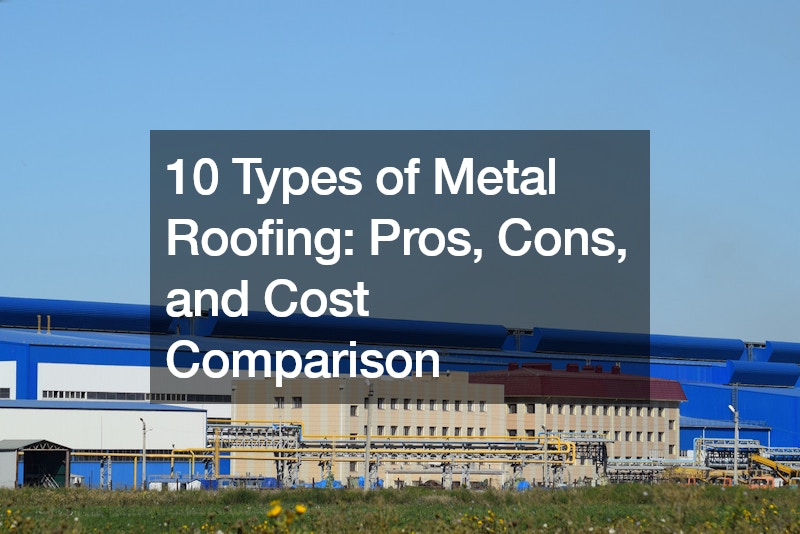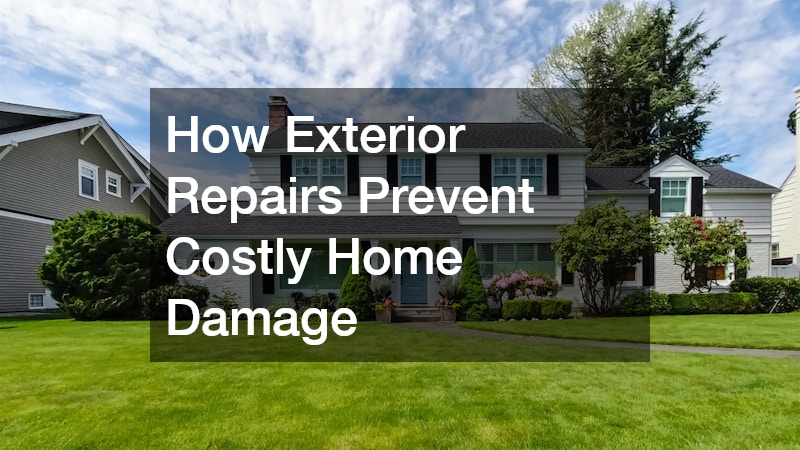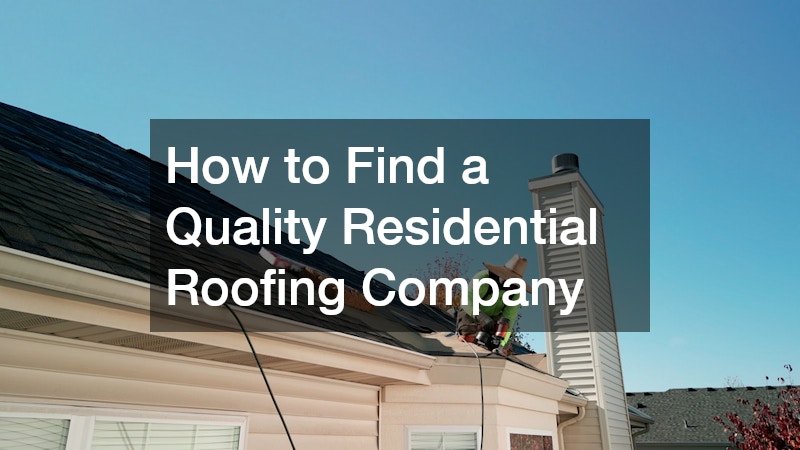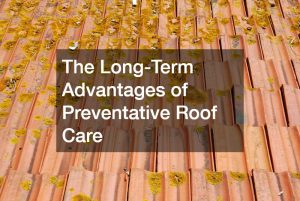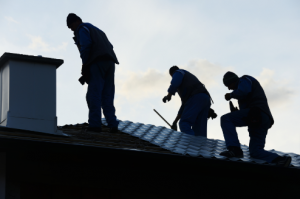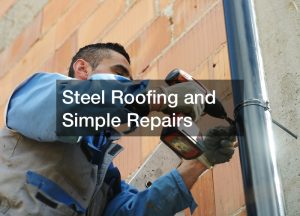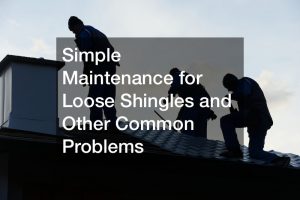10 Types of Metal Roofing Pros, Cons, and Cost Comparison
Asphalt shingles have long dominated the residential roofing landscape. But for homeowners seeking a more durable, long-lasting, and stylish alternative, metal roofing offers a compelling option. Metal roofing boasts numerous advantages, including exceptional longevity, low maintenance requirements, and improved energy efficiency.
However, with a wider variety of metal types, styles, and finishes available, choosing the right one for your home can feel overwhelming. This guide explores ten popular metal roofing options, highlighting their pros, cons, and costs to help you make an informed decision.
1. Standing Seam Metal Roofing:
Standing seam metal roofing is a top contender for its sleek aesthetic and exceptional performance. This style features interlocking panels with a raised vertical seam that creates a clean, modern look. Standing seam roofs are renowned for their watertight construction, making them ideal for areas with heavy rainfall or snowfall. Additionally, these roofs are highly customizable, allowing for adjustments in panel width, material, and finish to suit your preferences.
Pros:
Durability: Standing seam roofs can last for decades, with minimal maintenance required. Weatherproof: The interlocking seams prevent leaks and withstand harsh weather conditions. Energy Efficiency: Metal reflects sunlight, reducing heat absorption and lowering cooling costs. Aesthetics: Offers a sleek, contemporary look that enhances curb appeal. Customization: Available in various materials (steel, aluminum, copper) and finishes. Cons:
Cost: Standing seam is a premium metal roofing option with a higher upfront cost. Installation: Requires skilled professionals for proper installation. Noise: Metal roofs can amplify rain noise, although proper insulation can mitigate this. Estimated Cost: $7 – $14 per square foot (material and installation)
2. Corrugated Metal Roofing:
Corrugated metal roofing is a practical and affordable choice known for its distinctive wavy pattern. This design adds strength and rigidity to the panels, making them suitable for areas with high winds or heavy snowfall. Corrugated metal is a popular selection for agricultural and industrial buildings but can also add a rustic charm to residential properties. It’s available in various materials like galvanized steel, aluminum, and even copper, allowing for customization based on your budget and desired aesthetics.
Pros:
Affordability: Corrugated metal is one of the most cost-effective metal roofing options. Durability: Resistant to weather elements like rain, snow, and strong winds. Low Maintenance: Requires minimal upkeep and can last for several decades. Lightweight: Easy to transport and install, reducing labor costs. Variety: Available in different materials, colors, and finishes. Cons:
Aesthetics: The corrugated design may not suit all architectural styles. Noise: Similar to standing seam, corrugated metal can amplify rain noise. Susceptibility to Dents: Can be more prone to dents compared to other metal roofing options. Estimated Cost: $3 – $8 per square foot (material and installation)
3. Galvanized Steel Roofing:
Galvanized steel roofing offers a good balance between affordability and durability. This type utilizes steel sheets coated with zinc to provide superior corrosion resistance. Galvanized steel is a versatile option, available in flat panels or corrugated styles. While not as visually striking as some other metal roof options, it provides a clean and functional aesthetic that complements various architectural styles.
Pros:
Cost-Effective: A more affordable option compared to other metal roofing materials. Durable: Zinc coating protects the steel from rust and corrosion, extending its lifespan. Low Maintenance: Requires minimal upkeep throughout its lifespan. Lightweight: Easy to transport and install, reducing labor costs. Fire Resistant: Steel offers inherent fire resistance, providing an extra layer of safety. Cons:
Aesthetics: Offers a more basic look compared to other metal roof options. Scratches: The zinc coating can be scratched during installation, exposing the steel underneath. Heat Transfer: Steel can absorb and transfer heat more readily than some other metal roofing materials. Estimated Cost: $4 – $7 per square foot (material and installation)
4. Aluminum Metal Roofing:
Aluminum metal roofing is a popular choice for its lightweight properties, ease of installation, and exceptional longevity. Naturally resistant to rust and corrosion, aluminum offers excellent weatherproofing. Additionally, aluminum reflects sunlight, contributing to improved energy efficiency by reducing heat absorption in your home. This eco-friendly material is also recyclable, making it a sustainable option for environmentally conscious homeowners.
Pros:
Lightweight: Easy to transport and install, reducing labor costs and minimizing stress on the roof structure. Durable: Aluminum is naturally resistant to rust and corrosion, ensuring a long lifespan.
Energy Efficient: Reflective properties help keep your home cooler in summer, lowering cooling costs.
Low Maintenance: Requires minimal upkeep and can withstand harsh weather conditions.
Recyclable: Aluminum is an eco-friendly choice as it can be recycled and reused at the end of its lifespan.
Versatile: Available in a wide range of styles, colors, and finishes to complement different architectural styles.
Cons:
Cost: While more affordable than some metal options, aluminum is generally more expensive than asphalt shingles.
Denting: Aluminum is softer than some other metals and can be more prone to dents from hail or impact.
Painting: While pre-painted aluminum is available, maintaining the paint finish may be required over time.
Estimated Cost: $5 – $9 per square foot (material and installation)
5. Copper Metal Roofing:
Copper metal roofing is the undisputed champion in terms of longevity. A copper roof can last well over a century, developing a beautiful patina over time that enhances its unique aesthetic appeal. Highly resistant to fire, corrosion, and insect infestation, copper offers exceptional durability and low maintenance requirements. However, copper’s luxurious qualities come at a premium price.
Pros:
Unequaled Longevity: Copper roofs can last for well over 100 years, offering a long-term investment.
Beautiful Patina: Copper develops a distinctive greenish patina over time, adding a timeless charm to your home.
Durability: Highly resistant to fire, corrosion, insects, and harsh weather conditions.
Low Maintenance: Requires minimal upkeep throughout its lifespan.
Lightweight: Relatively lightweight compared to other metals, reducing stress on the roof structure.
Cons:
High Cost: Copper is the most expensive metal roofing option on the market.
Initial Appearance: The initial bright copper color may not be preferred by everyone.
Availability: Skilled installers experienced with copper roofing may be harder to find in some regions.
Estimated Cost: $12 – $20 per square foot (material and installation)
6. Zinc Metal Roofing:
Similar to copper, zinc metal roofing offers exceptional longevity and a unique aesthetic that develops a beautiful gray patina over time. Highly resistant to corrosion and fire, zinc provides excellent protection for your home. While less common in the United States compared to Europe, zinc roofing is gaining popularity due to its impressive durability and low maintenance needs. However, the initial cost of zinc roofing is quite high.
Pros:
Exceptional Longevity: Zinc roofs can last for up to 100 years, making them a worthwhile investment.
Distinctive Patina: Zinc develops a beautiful gray patina that adds a sophisticated touch to your home.
Durable: Highly resistant to corrosion, fire, and harsh weather elements.
Low Maintenance: Requires minimal upkeep throughout its lifespan.
Lightweight: Relatively lightweight, reducing stress on the roof structure.
Cons:
High Cost: Zinc is a premium metal roofing option with a significant upfront investment.
Limited Availability: Finding skilled installers experienced with zinc roofing might be challenging.
Initial Appearance: The initial bright zinc color may not be preferred by everyone.
Estimated Cost: $10 – $18 per square foot (material and installation)
7. Steel Shake Metal Roofing:
Steel shake metal roofing offers the classic beauty of wood shakes with the superior strength and durability of metal. These panels are designed to mimic the appearance of traditional wood shakes, providing a rustic aesthetic for your home. Steel shake roofing is available in a variety of colors and finishes, allowing you to achieve the desired look for your property. It boasts excellent fire resistance, low maintenance requirements, and a significantly longer lifespan compared to wood shakes.
Pros:
Classic Beauty: Mimics the look of wood shakes while offering superior strength and durability.
Variety: Available in a range of colors and finishes to complement different architectural styles.
Durability: Steel construction ensures exceptional resistance to fire, rot, and insect infestation.
Low Maintenance: Requires minimal upkeep compared to traditional wood shakes.
Long Lifespan: Can last for several decades with proper maintenance.
Cons:
Cost: Steel shake metal roofing is generally more expensive than asphalt shingles.
Noise: Metal roofs can amplify rain noise, although proper insulation can mitigate this.
Weight: Steel shake roofing is heavier than some other metal options, requiring a strong roof structure.
Estimated Cost: $6 – $12 per square foot (material and installation)
8. Tile-Inspired Metal Roofing:
Tile-inspired metal roofing offers a classic Mediterranean look with the added benefits of metal roofing. These panels are designed to resemble traditional clay or concrete tiles, providing a timeless aesthetic for homes in warmer climates. Compared to real tiles, metal offers several advantages. It’s lighter in weight, reducing stress on the roof structure. Metal tiles are also easier to install and require less maintenance. Additionally, metal offers superior durability, resisting cracking, fading, and fire damage that can plague traditional tiles over time. While generally more expensive than asphalt shingles, tile-inspired metal roofing can be a more cost-effective option compared to other metal roofing materials.
Pros:
Classic Mediterranean Style: Offers the beauty of traditional tiles with the enhanced durability of metal.
Lightweight: Compared to real tiles, metal is lighter, minimizing stress on the roof structure.
Easy Installation: Metal tiles are generally easier and faster to install than traditional tiles.
Low Maintenance: Requires minimal upkeep compared to traditional tiles.
Durable: Resists cracking, fading, and fire damage better than traditional tiles.
Cost-Effective: Generally more affordable than other metal roofing options.
Cons:
Cost: Still more expensive than asphalt shingles upfront.
Noise: Metal roofs can amplify rain noise, although proper insulation can mitigate this.
Limited Availability: Tile-inspired metal roofing options may not be as widely available as some other metal roofing materials.
Estimated Cost: $4 – $8 per square foot (material and installation)
9. Slate-Inspired Metal Roofing:
Slate-inspired metal roofing provides the luxurious look of natural slate without the drawbacks. These metal panels mimic the appearance of slate, offering a sophisticated aesthetic for your home. Unlike real slate, metal is significantly lighter, reducing the strain on your roof structure. Metal slate is also easier to install and requires minimal maintenance. Additionally, it boasts superior durability, resisting fire, hail, and other harsh weather elements. While still a premium option, slate-inspired metal roofing can be a more cost-effective alternative to genuine slate due to its lower installation costs and lighter weight.
Pros:
Luxurious Look: Mimics the beauty of natural slate at a fraction of the weight.
Lightweight: Reduces stress on the roof structure compared to real slate.
Easy Installation: Faster and easier to install than natural slate.
Low Maintenance: Requires minimal upkeep throughout its lifespan.
Durable: Resists fire, hail, and other harsh weather elements better than natural slate.
Cost-Effective: More affordable than genuine slate due to lighter weight and easier installation.
Cons:
Cost: Still a premium metal roofing option compared to asphalt shingles.
Noise: Metal roofs can amplify rain noise, although proper insulation can mitigate this.
Limited Availability: Slate-inspired metal roofing options may not be as widely available as some other metal roofing materials.
Estimated Cost: $8 – $14 per square foot (material and installation)
10. Green Metal Roofing:
Green metal roofing, also known as vegetative roofing, incorporates a layer of vegetation planted over the metal roof panels. This eco-friendly option offers numerous benefits beyond aesthetics. Green roofs help insulate your home, reducing energy costs for heating and cooling. Additionally, they can absorb rainwater, reducing stormwater runoff and improving air quality. While green roofs require additional support structures and ongoing maintenance, they can be a sustainable and visually appealing choice for environmentally conscious homeowners.
Pros:
Environmental Benefits: Reduces energy costs, improves air quality, and manages stormwater runoff.
Insulation: Provides additional insulation for your home, improving energy efficiency.
Aesthetics: Creates a beautiful and unique green space on your rooftop.
Cons:
Cost: Requires additional support structures and ongoing maintenance, making it a more expensive option.
Weight: The added weight of vegetation necessitates a strong roof structure.
Maintenance: Requires regular watering, weeding, and fertilization.
Estimated Cost: $15 – $30 per square foot (material, installation, and vegetation)
Conclusion
Metal roofing offers a wide range of styles, materials, and benefits to suit any homeowner’s needs and budget. By considering factors like durability, aesthetics, cost, and maintenance requirements, you can make an informed decision about the best metal roofing option for your home. Remember, while metal roofing typically has a higher upfront cost compared to asphalt shingles, its exceptional longevity and low maintenance needs can make it a worthwhile investment in the long run.
.

